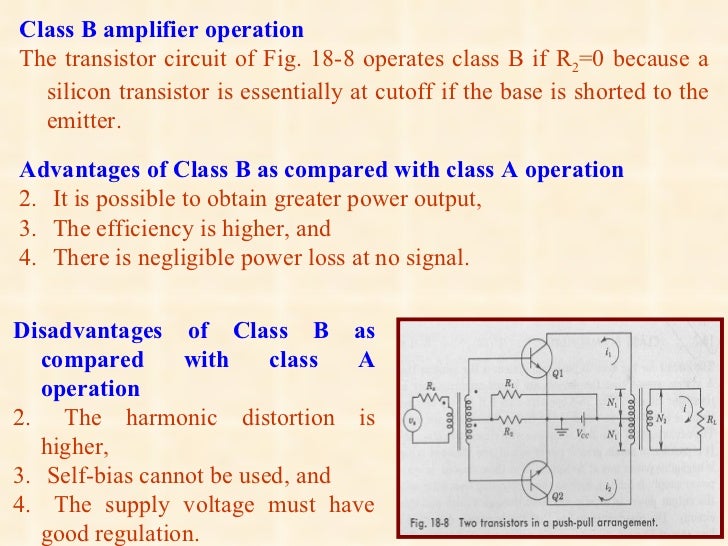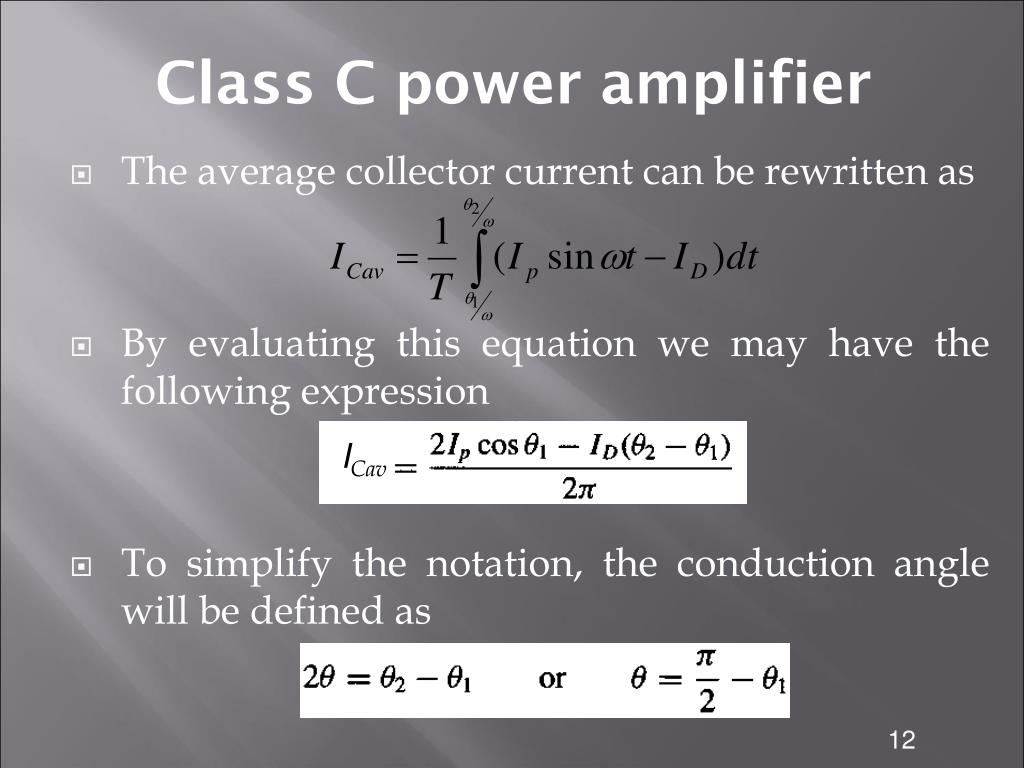Class C Power Amplifier Presentation
| Introduction to Class C Power Amplifier | ||
|---|---|---|
| Class C power amplifiers are commonly used in RF (radio frequency) applications. They are efficient and provide high power output. Class C amplifiers operate less than 50% of the input signal cycle. |  | |
| 1 | ||
| Working Principle | ||
|---|---|---|
| Class C amplifiers use a cutoff biasing technique where the transistor conducts only during a portion of the input signal. The transistor is biased to operate in the cutoff region for most of the input cycle. This results in high efficiency but introduces distortion in the output signal. | ||
| 2 | ||
| Key Features | ||
|---|---|---|
| Class C amplifiers have a high power gain, making them suitable for applications requiring high output power. They are commonly used in radio transmitters, RF communication systems, and audio amplification. Class C amplifiers have a narrow bandwidth due to the distortion introduced by the cutoff operation. | ||
| 3 | ||
| Advantages | ||
|---|---|---|
| High efficiency: Class C amplifiers are known for their high power efficiency, making them suitable for battery-powered devices. Compact design: Due to their high efficiency, these amplifiers can be designed with smaller components and heat sinks. Cost-effective: Class C amplifiers are relatively inexpensive to manufacture compared to other classes. | ||
| 4 | ||
| Disadvantages | ||
|---|---|---|
| High distortion: The cutoff operation introduces distortion, resulting in reduced signal fidelity. Narrow bandwidth: Class C amplifiers have limited frequency response due to the distortion caused by the cutoff biasing. Complex design: Designing a Class C amplifier requires careful consideration of biasing and tuning for optimum performance. | ||
| 5 | ||
| Applications | ||
|---|---|---|
| RF transmitters: Class C amplifiers are commonly used in RF transmitters to provide high power output for long-range communication. Audio amplification: In some applications, where high power output is required, Class C amplifiers can be used for audio amplification. Test and measurement equipment: Class C amplifiers are used in various test and measurement instruments that require high power output. | ||
| 6 | ||
| Comparison with Other Classes | ||
|---|---|---|
| Class C vs. Class A: Class C amplifiers are more efficient but introduce more distortion compared to Class A amplifiers. Class C vs. Class B: Class C amplifiers offer higher efficiency but have higher distortion compared to Class B amplifiers. Class C vs. Class AB: Class C amplifiers have higher efficiency but narrower bandwidth compared to Class AB amplifiers. | ||
| 7 | ||
| Conclusion | ||
|---|---|---|
| Class C power amplifiers are efficient and provide high power output, making them suitable for RF applications. They have advantages such as high efficiency and compact design, but also limitations like distortion and narrow bandwidth. Understanding the working principle and considering the application requirements are crucial for designing and using Class C amplifiers effectively. | ||
| 8 | ||




